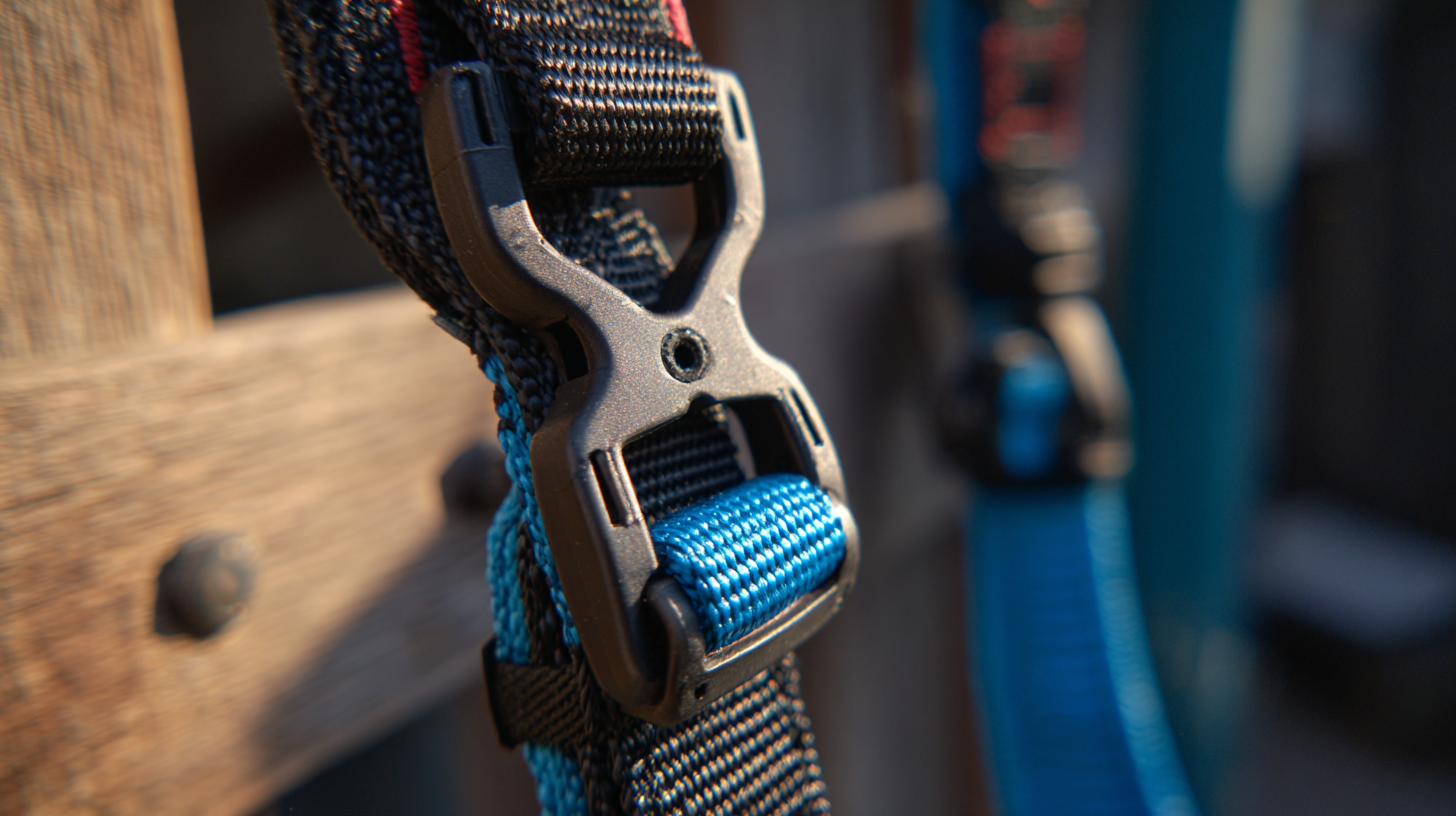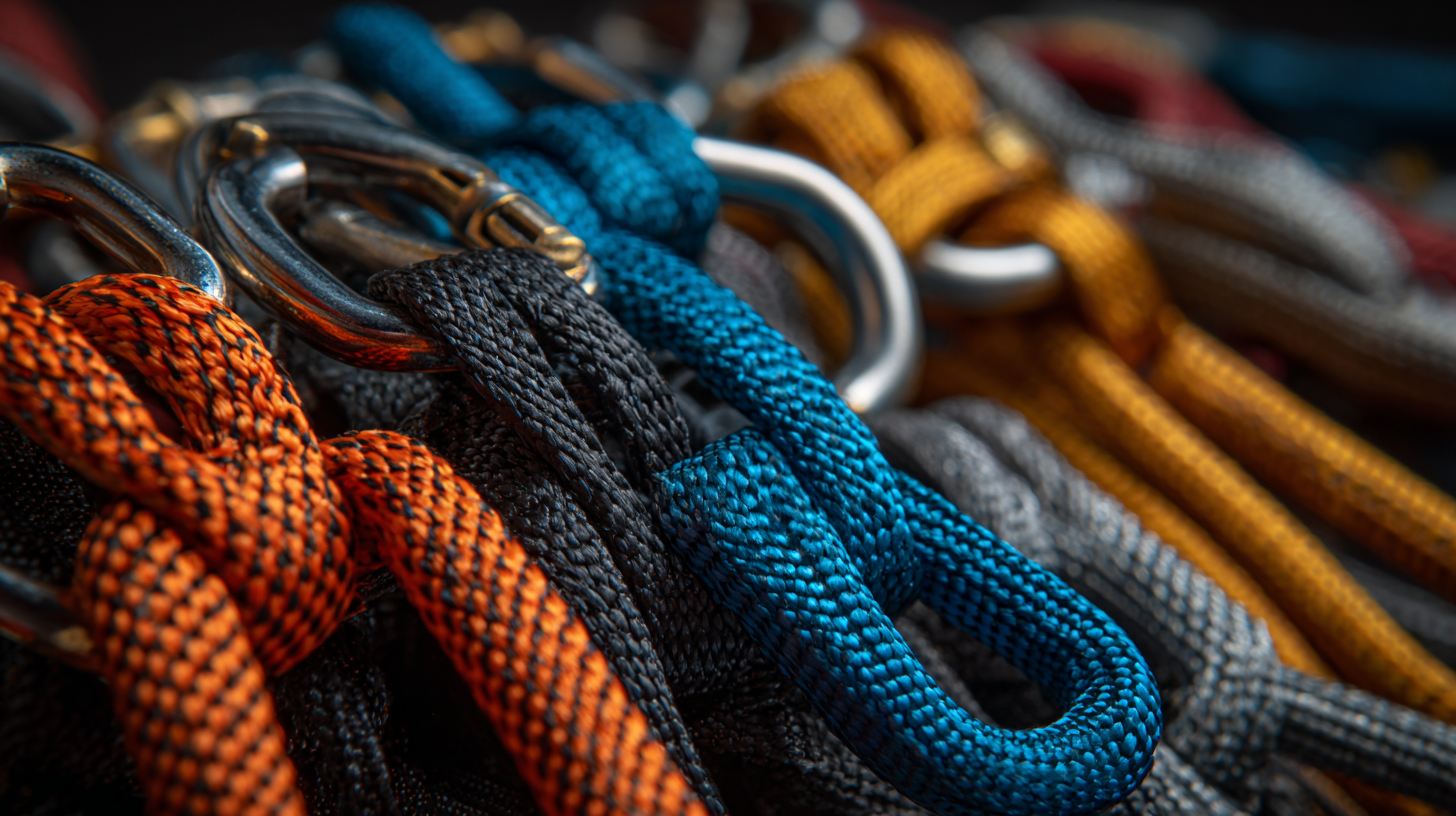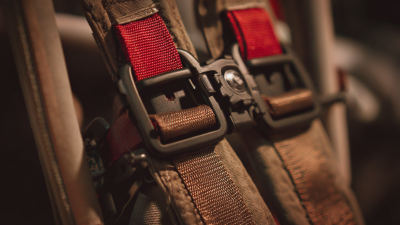Choosing the right cam straps is crucial for anyone engaged in outdoor activities, transporting gear, or securing loads. According to the Outdoor Industry Association, the outdoor recreation economy generates $887 billion annually, highlighting the importance of reliable equipment. Effective cam straps ensure not only the safety of your gear but also enhance overall efficiency in your activities. A survey conducted by the Equipment Leasing and Rental Association revealed that 68% of outdoor enthusiasts prioritize the quality and durability of their securing equipment.

With various options available in terms of length, width, and material, selecting the right cam straps tailored to your specific needs can significantly impact your experience, whether you're embarking on a weekend camping trip or securing cargo for transport. Understanding the features and specifications of cam straps can help prevent damage and ensure peace of mind while on your adventures.
When selecting cam straps, understanding the different types available and their specific uses is crucial for ensuring safety and efficiency. Cam straps, primarily made from durable materials like polyester or nylon, are designed for a variety of applications ranging from securing cargo to camping gear. According to a report by the Outdoor Industry Association, around 65% of outdoor enthusiasts cite reliable gear as pivotal for their adventures, highlighting the importance of choosing the right cam straps.
 For example, wide cam straps are typically favored for securing larger loads due to their enhanced load distribution, which minimizes the risk of damage.
For example, wide cam straps are typically favored for securing larger loads due to their enhanced load distribution, which minimizes the risk of damage.
In contrast, narrow cam straps are often used for lighter loads, such as securing equipment for biking or hiking trips. The American National Standards Institute (ANSI) suggests that cam straps should have a minimum breaking strength of 1,000 pounds for general applications, emphasizing the need for durability. For marine applications, cam straps are coated to resist saltwater corrosion. By considering both the material and intended use, users can select the most effective cam straps to ensure their gear remains secure in any situation.
When selecting the appropriate cam straps for your needs, several key factors must be considered to ensure durability and effectiveness. First, the weight capacity of the straps is crucial. According to a report by the American National Standards Institute (ANSI), cam straps with a breaking strength exceeding 1,000 pounds are recommended for heavy-duty applications, such as securing large cargo or outdoor gear. It's essential that the straps you choose can accommodate the weight of your load while providing a safe margin of safety.
Another important aspect is the material of the cam straps. Polyester is a popular choice due to its excellent resistance to UV rays and mildew, which significantly extends the lifespan of the straps. Industry research shows that straps made from high-quality polyester can maintain their integrity even after prolonged exposure to harsh conditions outdoors. Additionally, consider the width of the straps; wider straps distribute the load more evenly, reducing the risk of damage to both the cargo and the straps themselves. Selecting the right cam strap is not just about meeting immediate needs but also about ensuring long-term reliability and performance in diverse environments.
| Factor | Description | Example Use Cases | Weight Capacity |
|---|---|---|---|
| Material | The composition of the cam strap affects durability and stretch. | Camping gear, securing ladders | Up to 1000 lbs |
| Length | Different lengths are suited for various applications. | Cargo management, biking | Up to 600 lbs |
| Width | Wider straps distribute weight better but may be bulkier. | Transportation of large items | Up to 800 lbs |
| Buckle Type | Different buckle types provide varying ease of use and security. | Tightening cargo, gear securing | Varies with design |
| Weather Resistance | Some materials are treated to resist moisture and UV damage. | Outdoor use, marine applications | Up to 500 lbs |
When choosing cam straps for your needs, one of the most crucial aspects to consider is the material's durability and strength. High-quality straps are typically made from robust materials that can withstand considerable tension and stress. For instance, polyester is often favored for its resistance to abrasion, UV light, and moisture, making it ideal for outdoor activities. Additionally, the stitching and buckle design can impact the overall strength, so it's essential to evaluate these components carefully.
Tips: When evaluating cam straps, look for heavy-duty stitching, reinforced edges, and rust-resistant buckles. Ensure that the straps have a high break strength rating which indicates how much force they can handle before failing. Also, consider the length and width of the strap; wider straps distribute weight more evenly and can be more comfortable to use over extended periods.
Another factor to keep in mind is the intended use of the straps. Whether you need them for securing gear during camping trips or for hauling cargo, the specific requirements will dictate the best choice. For instance, if you're using them frequently in wet conditions, seek out options that offer water resistance or quick-dry properties.

When selecting cam straps, precise measurement and sizing are crucial to ensure optimal performance and safety. Begin by determining the appropriate length for your cam straps. Measure the distance between the anchor points where the straps will be used, adding extra length if you'll need to create loops or tie the straps in a specific way. For most applications, such as securing cargo or gear, a little extra length can offer flexibility during use. Most cam straps come in various lengths, typically ranging from 6 feet to 20 feet, so choose a length that fits your specific needs without overwhelming excess.
In addition to length, it’s important to consider the width of the cam strap. Wider straps generally distribute weight more evenly, offering better support and reducing the risk of damage to the surfaces they come into contact with. A strap width of 0.75 inches is standard for general use, but heavier loads may require a wider option for added security. Finally, always check the strap's weight rating to ensure it can handle the load you intend to secure. By carefully measuring and considering both length and width, you can select cam straps that perfectly meet your needs for safety and effectiveness.
When selecting cam straps for your projects, avoiding common mistakes can make a significant difference in performance and safety. One frequent error is overlooking the weight capacity of the straps. According to a report by the American National Standards Institute (ANSI), cam straps should always be chosen based on their working load limit (WLL). It's crucial to select straps with a WLL that exceeds the weight of the items you intend to secure. This not only ensures safety but also prevents potential damage to both the straps and the cargo.
Another mistake often made is failing to account for the environment in which the straps will be used. For instance, using straps made from polyester in extreme UV conditions can lead to rapid degradation, as highlighted by data from the International Association of Trampoline Parks. Much like choosing the right materials for construction, selecting straps resistant to weather elements extends their lifespan and maintains their reliability. By understanding these critical factors, you can effectively select cam straps that best fit your specific needs while avoiding potentially costly mistakes.






